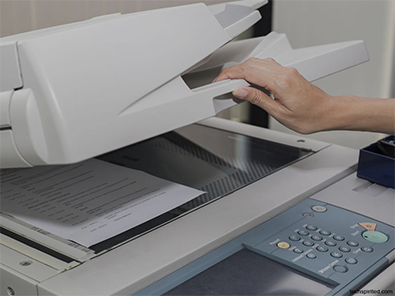MPS Should Help Businesses Eliminate Non-Essential Printing
This guest blog was contributed by Michael Rich.
Industry research shows that companies can realize cost savings of as much as 30 percent by transitioning to managed print services (MPS), while published case studies promote even greater savings over the course of a long-term contract. Much of the focus for driving cost out of the print environment is on printing hardware: reducing redundancies, lowering supplies costs, and pushing pages to the most cost-effective devices.
But to increase effectiveness, a good MPS solution should not only reduce print costs but also help reduce print volume by identifying and eliminating non-essential printing. Businesses today operate in what could best be described as a hybrid environment. On the one hand, mobile technologies and cloud-based solutions are changing the way we work with documents and business information. Yet, many paper-intensive processes remain in place due to legacy workflows that are firmly entrenched.
We continue to churn through tons of pages in the office sector. Of course, paper is not going away – nor should it – but a lot of what occurs today in many office environments is non-essential printing: the production of pages that, for whatever reason, are simply tossed, recycled, or left abandoned and never even used. Think about how much paper is thrown away or recycled within your own business and it is easy to see that many of the pages generated in today’s offices should never have been printed in the first place.
There are numerous sources for non-essential pages. The first and most obvious of these is wasteful printing: banner pages, duplicate printouts, single-sided printing, and personal printing, for example. Wasteful copying is also problematic for those businesses that continue to produce multiple copies of original documents for meetings, reports, filing, and auditing purposes.
Meanwhile, a lot of paper is introduced into businesses from external sources: registration documents, health records, mail, invoices…the list is a long one and it varies for every type of organization. While a great deal of information arrives in paper format, there are typically very few reasons for that information to remain on paper.
Why is this so important to understand? Studies have indicated that businesses could reduce paper consumption by as much as 50 percent by simply eliminating non-essential printing. InfoTrends, a market research firm that closely follows the printing industry, recently published a study regarding document usage in the education sector. A quick review of some statistics from that study can put things into perspective fairly quickly:
- 25 percent of curriculum is presented to students on paper, yet 45 percent of print jobs are thrown away the same day
- 1/3 of student records are stored in file folders
- Up to 40 percent of pages produced on MFPs are photocopies (creating new paper from existing paper)
- 40 percent of school and classroom communications are sent via paper
- 80 percent of pages printed are single-sided
- 80 percent of student information packs are distributed via paper
- 25 percent of printed digital original documents are re-keyed into computers
- 90 percent of new or transferring student registration materials are submitted via paper
- 50 percent of paper documents are keyed into computer systems
These examples provide context for what is likely occurring in similar ways for businesses of all types and sizes. Paper usage is subjective and is typically driven by user preference or organizational decision and policy. When you look at the amount of non-essential printing that likely occurs across all users and all processes, it is easy to see where opportunities for improvement could exist. And the cost of non-essential paper goes well beyond waste into other strategic areas that are important to every organization.
Managing and supporting the production of paper, as we all know, is a significant strain on IT resources. Security is another important point to consider. Ensuring privacy and confidentiality of paper files is typically a separate process than security measures around electronic files – and for many organizations it is often an afterthought. This can lead to potential gaps in security policy with the added risk of not meeting compliance measures such as HIPPA, FERPA, and others. Paper also restricts access to information because it is not as easily shared compared with digital content. In reality, paper may no longer be the most effective medium for many of the applications in today’s business environment.
For MPS to be most effective, it should help businesses gain control of their environment and solve the fundamental problems that exist with today’s office documents. Reducing output costs is important, but it should not come at the expense of productivity and process efficiency. At the same time, a strategy for reducing print volume by identifying non-essential printing sources is crucial to streamlining document workflow. MPS providers should be able to demonstrate proper expertise and proven examples of document workflow improvements for clients, as well as have access to the necessary workflow solutions that can facilitate changes to their clients’ overall document infrastructure.
Michael Rich

Posted on 10/25/2013


